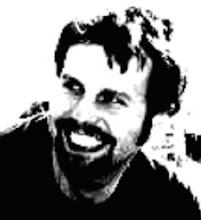 Recorded in May and June of 1977 for a feature on the Berlin station RIAS (Radio in the American Sector), Dream & Desire finds Manuel Göttsching further exploring the serene moods previously found on Ocean of Tenderness and Deep Distance (from the album New Age of Earth) and with live performances of Lotus (which was recorded in the studio a few months after this music for the Blackouts album).
Recorded in May and June of 1977 for a feature on the Berlin station RIAS (Radio in the American Sector), Dream & Desire finds Manuel Göttsching further exploring the serene moods previously found on Ocean of Tenderness and Deep Distance (from the album New Age of Earth) and with live performances of Lotus (which was recorded in the studio a few months after this music for the Blackouts album).The first moments of Dream set the scene for what is to come. A gentle wind, created by the EMS Synthi-A is joined by light, extended synthesizer chords, creating a breezy and majestic air of mystery. A simple, repetitive keyboard part, suggesting thousands of stars shining brightly in the heavens is coupled with a drowsy ascending sequencer pattern to form a soft musical bed. A world away from the heavy, ultra-intense performance found on Amboss (from the first Ash Ra Tempel album) six years earlier, Dream is a showcase for the placid, delicate side of Göttsching’s musical ability. For the most part the guitar work is so feather light, so refined that it is a wonder the instrument didn’t fall out of Manuel’s hands as he played.
Dream does gather some momentum with beautiful mandolin-like flurries of notes and guitar tracks weaving around one another but never to the point where rock would be an adequate description. Blissfully chilled out is much closer to the mark. The 30-minute duration of the track allows the music to unfold gradually, taking the listener on a peaceful, almost meditational journey, as soporific as anything presented in the recordings of Brian Eno or The Orb. This panoramic soundscape paints a semi-pastoral picture, yet there is also something faintly otherworldly at play. Perhaps this is where we enter the dream.
Like Dream, the second track, Desire begins with mysterious, extended synth chords. This is a musical eclipse, all cold, dark shadows before a quavering electronic sound appears, suggesting solar flares ejecting plumes of plasma into space. At the four-minute mark a slow train-like sequencer pattern fades in. This is then accompanied by the light, slightly metallic percussive sounds of the EKO Computerhythm, an early drum machine. Interestingly there are no guitars on this track. Whereas Dream was a showcase for the most delicate side of Manuel’s guitar work, the 23-minute Desire features keyboard soloing over extended keyboard chords. Whilst this piece is given mild momentum by a more prominent sequencer pattern than Dream, it still has a placid, somnambulistic quality consistent with the first track.
Curiously the 8-minute Despair, which was recorded during the same period as Dream and Desire but never presented to RIAS for broadcast shows not a hint of angst. From the title the listener may deduce that the music could be dark or even frantic but the opening synthesizer chords and gently jangling guitar tones are more euphoric than anything else. When a bubbling sequencer pattern emerges, this final track proves to be the most energetic, and arguably the most upbeat offering on the album, concluding with some rock guitar soloing, underpinned by funky, latin influenced guitar chords.
Complimenting the rest of Manuel Göttsching’s 1976/77 output perfectly, fans will be left dumbstruck that the material on Dream and Desire was left in the vaults for 13 years before it’s eventual CD release on the Spalax label in 1991. This album is quite simply superb.









No comments:
Post a Comment